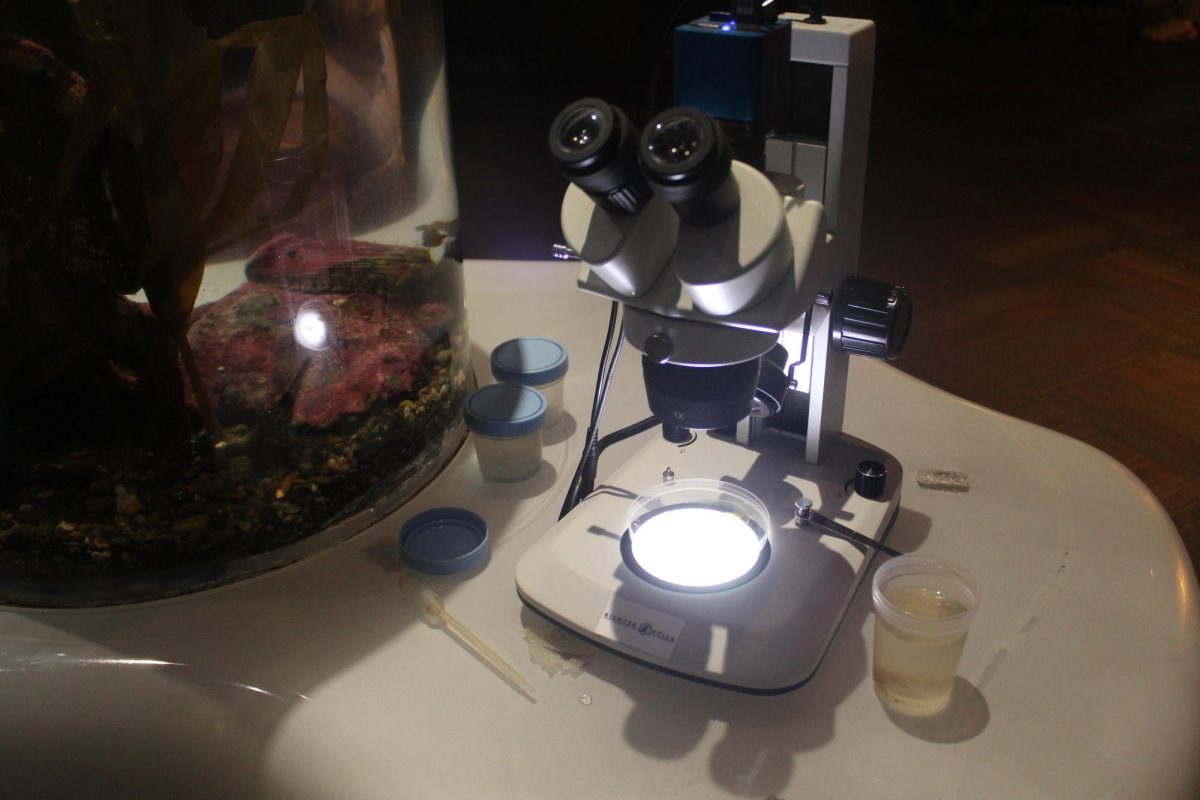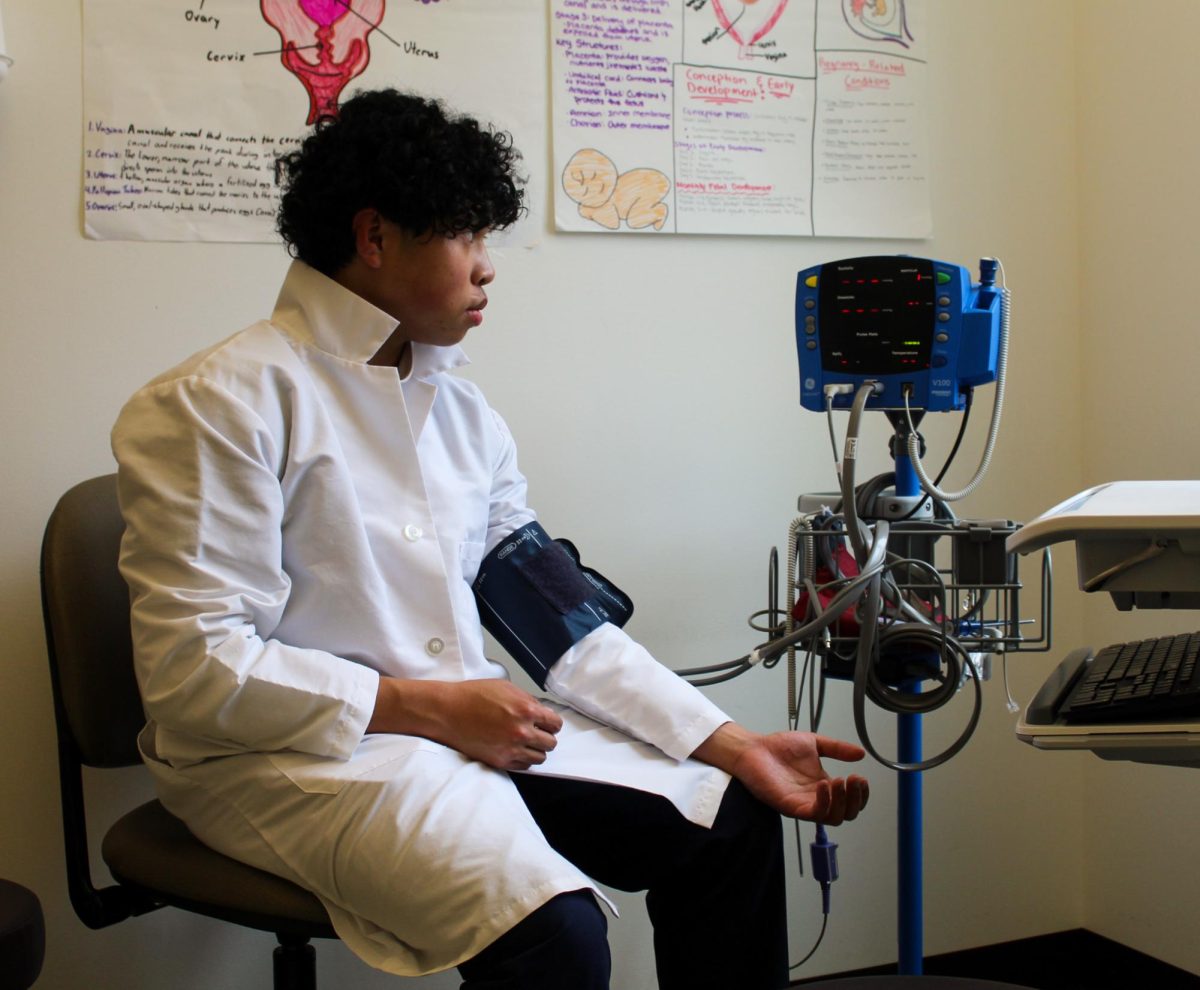You wouldn’t believe me if I told you that on average, the human body ingests 5 grams of microplastic per week — the size of a credit card. This translates to over 120,000 grams per year, according to the American Chemical Society. Although thousands of these microscopic plastic pieces circulate the human body, their immediate health impacts are unknown. However, studies from the National Library of Medicine have shown that more microplastic intake could be linked to higher risks of lung disease, heart attacks and respiratory infections. Microplastics are also detrimental to the environment, especially to marine organisms.
Microplastics are defined by the National Oceanic and Atmospheric Association as “small pieces of plastic less than 5 millimeters long,” equating to the size of a sesame seed. They are a byproduct of larger plastic consumer items like soda bottles and food containers. The longer a plastic spends in the environment, the more susceptible it is to weathering from the sun, wind or rain, breaking up into smaller and smaller pieces. Because microplastics are so small and difficult to remove, they have longevity in the environment. It can take anywhere from 20 to 500 years for plastic to fully break up into microplastics, and about 1,000 years before it deteriorates entirely.
Aarin Wilde (he/they) is the Education and Stewardship Manager of the Puget Sound Keeper, a non-profit organization that aims to protect nearby bodies of water. The Puget Sound Keeper enforces environmental laws on consumer companies and seeks individual engagement through conservation projects within the organization. Wilde said that although microplastics are regularly seen in bodies of water, it is also very common for them to be found elsewhere.
“We find them in parks that are far away from land and we find them in animals. So there really isn’t a place where you can’t find microplastics,” Wilde said. “There’s actually a new category of them called nanoplastics. They will evaporate and can be found in clouds now.”
Frequently found in oceans, lakes and rivers, microplastics pose a large risk to marine life because of bioaccumulation. Bioaccumulation is the buildup of toxins within an organism, amplified as those toxins travel up the food chain from smaller animals to top predators.
“There’s something about the chemical makeup of a lot of polymers that attracts toxins like PCBs or DDT, and they will actually bind to plastic,” Wilde said. “So once plastic makes its way into an animal’s body, those toxins bioaccumulate, and that can be a lethal secondary effect.”
Scientific research on microplastics is still developing because the microscopic size of these plastics makes them not only hard to remove but difficult to study. Besides the Puget Sound Keeper, local organizations like the Seattle Aquarium and National Oceanic and Atmospheric Organization have conducted research on microplastics. Many volunteers at the Seattle Aquarium’s Youth Ocean Advocate program perform a plankton tow, which is the process of capturing and analyzing water samples for plankton in the Puget Sound. As a YOA myself, one of the most common things I’ve seen when looking at my water sample is microplastic. Under a microscope, they look like long blue or pink strings. For his part, Wilde said that throughout his career, he’s never seen a plankton tow without microplastics. This worries him because many people have yet to realize how dire of an issue microplastics are, even though they’ve been found in almost everything.
“We’re just now starting to understand what the issue is, but the reality is that the solutions are not going to be implemented for maybe 10, 20, 50 years. In that time, we’re already going to be producing more and more plastic, we’re going to be dumping more and more plastic, whether intentionally or unintentionally adding to the issue, and that impact is already exponential,” Wilde said.
One of the biggest changes that needs to be made when viewing solutions to environmental health, Wilde said, is focusing on the producer rather than the consumer. Not everyone has the financial freedom to make environmentally conscious purchases. Consumer companies, on the other hand, have that ability to make change. The Extended Producer Responsibility bill holds companies accountable internationally for the plastic they produce. The bill declares that a company is financially and operationally responsible for the entire lifetime of any plastic they produce, including the costs needed to recycle or remove it from the environment.
“I think it’s more vital to focus on the bigger picture of plastics production and waste management across the world than it is to focus on removing microplastics from sand or water,” Wilde said. “Microplastics are a symptom of the larger issue of plastics production and the way that we dispose of our waste in general, not just plastics.”










